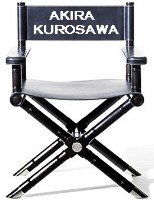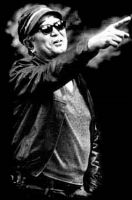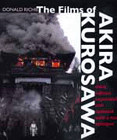 |
 |
After working in an extensive range of genres, Akira Kurosawa made his breakthrough film in 1950 with the technically perfect Rashomon. It won the top prize at the Venice Film Festival (Golden Lion), and first revealed the richness of Japanese cinema to the rest of the world. Heavily revered in the West, Kurosawa's films have always been more popular there than in his homeland of Japan. His native critics often view his adaptations of Western authors and genres (ex. Shakespearean plays in Feudal Japanese settings) with apprehension. Kurosawa was best know for his utilization of the mis-en-scene - taking advantage of the full widescreen scope to isolate characters and introduce extraneous detail. His films ranged from samurai action to touching dramas. Kurosawa worshipped American director John Ford, signifying him as his primary influence as a filmmaker. He is quoted as saying "For me, film-making combines everything. That's the reason I've made cinema my life's work. In films, painting and literature, theatre and music come together. But a film is still a film." |
|
|
||
|
Suggested Reading (click cover or title for more info) by Donald Richie |
Director - Feature filmography and DVDBeaver links: Postwar Kurosawa Boxset (Eclipse #7) h AK 100 - 25 Films By Akira Kurosawa h Madadayo (1993), Rhapsody in August (1991), Dreams (1990), Ran (1985), Kagemusha (1980), Dersu Uzala (1975), Dodesukaden (1970), Red Beard (1965), High and Low (1963), Sanjûrô (1962), Yojimbo (1961), The Bad Sleep Well (1960), The Hidden Fortress (1958), Lower Depths (1957), Throne of Blood (1957), I Live in Fear (1955), Seven Samurai (1954), Ikiru (1952), The Idiot (1951), Rashômon (1950), Scandal (1950), The Quiet Duel (1949), Stray Dog (1949), Drunken Angel (1948), One Wonderful Sunday (1947), No Regrets for My Youth (1946), Zoku Sugata Sanshiro (1945), The Men Who Tread On the Tiger's Tail (1945), The Most Beautiful (1944) |
|
